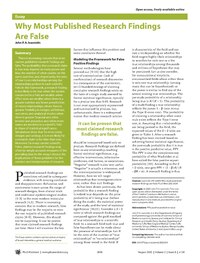
Photo from wikipedia
In this paper, we demonstrate that using finite sample correction bootstrapping techniques is advisable in samples that cover less than two complete business cycles, even when high-frequency data seemingly provide… Click to show full abstract
In this paper, we demonstrate that using finite sample correction bootstrapping techniques is advisable in samples that cover less than two complete business cycles, even when high-frequency data seemingly provide a sufficient number of observations to overcome the small sample bias. This is particularly relevant in the current research environment. Because the recent financial crisis is considered as a structural break, research on current problems is often conducted using post-crisis data. That is, the available samples cover only a few years of data, often spanning only one business cycle or even less. We provide ample simulation-based evidence that samples of daily or monthly dynamic data covering periods of this magnitude are prone to a fairly substantial bias. Moreover, we are able to show that standard bootstrap-based bias correction techniques still work in those cases.
Journal Title: Economic Modelling
Year Published: 2017
Link to full text (if available)
Share on Social Media: Sign Up to like & get
recommendations!